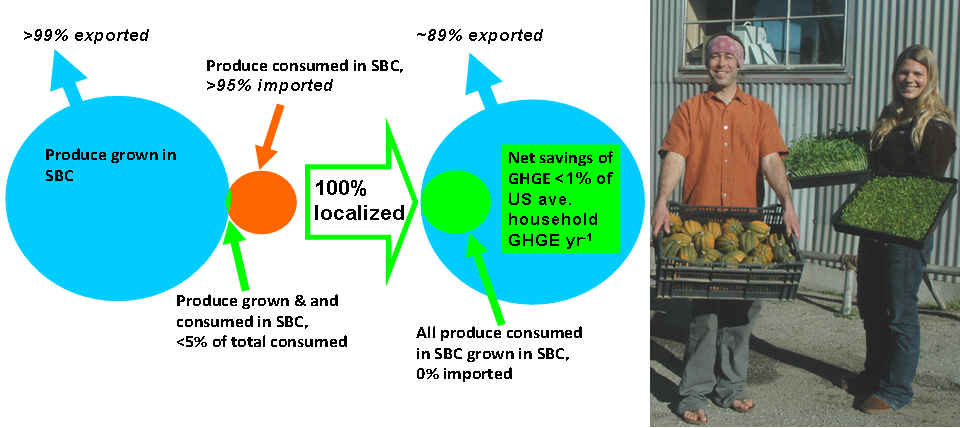| |
|
This class investigates current agrifood system and potential benefits and costs of localization. Covers theory, data collection, analysis methods, key indicators (greenhouse gas emissions, biodiversity, migrant labor, nutrition, community health), policies and actions for change. Students conduct and present research as team. Graduate students also write a grant proposal.
The prerequisite for all students is permission of the instructor. Undergraduates must have successfully completed World Agriculture, Food and Population. Admission to the seminar is by application, which you can download here along with information about the next class.
*********************************************************************************************************
It is widely recognized that the conventional US agrifood system, while highly productive is unsustainable—it has major negative environmental, social and economic impacts, including large contributions to greenhouse gas emissions (GHGE) and high levels of malnutrition. There has been increasing interest in localizing agrifood systems, based on the assumption that the spatial, economic and structural centralization of this system is a major cause of these negative impacts. Two initial questions need to be answered about localization in each instance: “How local is this agrifood system?”, and “How would increasing localization help achieve goals of decreasing negative effects of the current system?” We answered these in 2009-11.
Since then we have been focusing on the question “How can we localize the SBC AFS in ways that synergistically increase sustainability socially, environmentally and economically?” The topic for 2014 is the potential for diet change to mitigate greenhouse gas emissions. Our individual and collective diets, and the agrifood systems that support and encourage them, have a broad array of effects that make a large contribution to GCC. Thus, our two main questions are, How can changing diets help to mitigate agrifood systems’ contributions to GCC? (both directly via changes in food production, processing, transport, preparation, and food waste, and indirectly via reduced health care), and, What are the variables that increases the probability of individuals, societies and institutions working to make these dietary changes happen?
Students in this seminar will participate in the whole range of research activities for their specific area of research, from defining the problem, creating hypotheses, collecting data needed to test hypotheses, analyzing data, making presentations, writing articles and reports, and authoring mss. |
